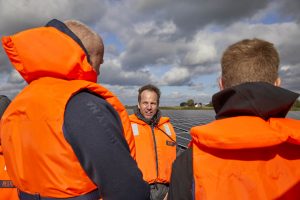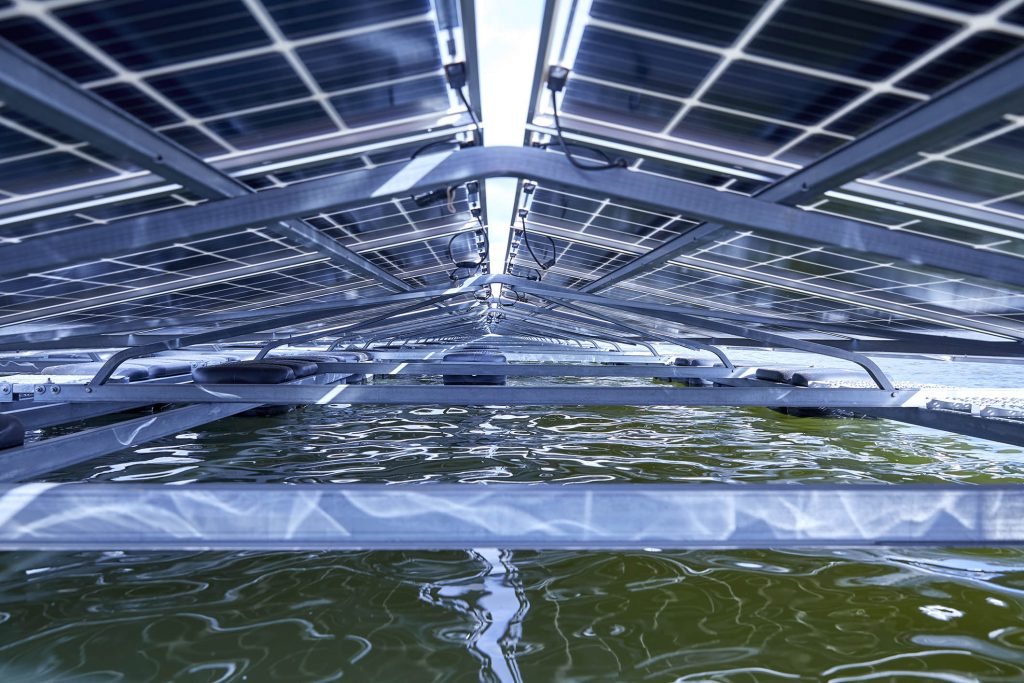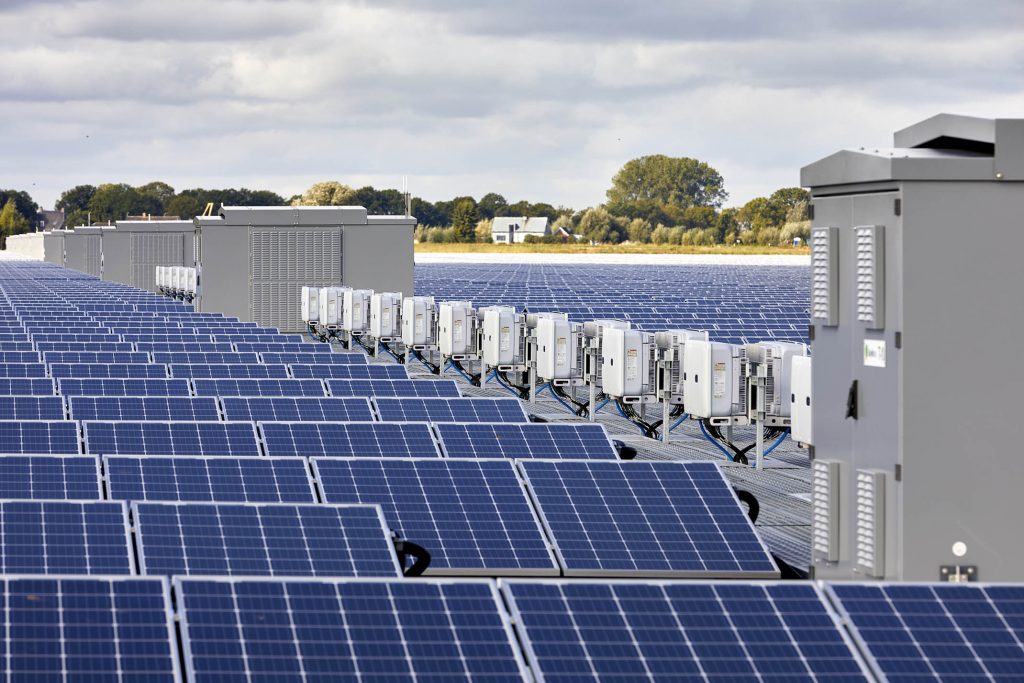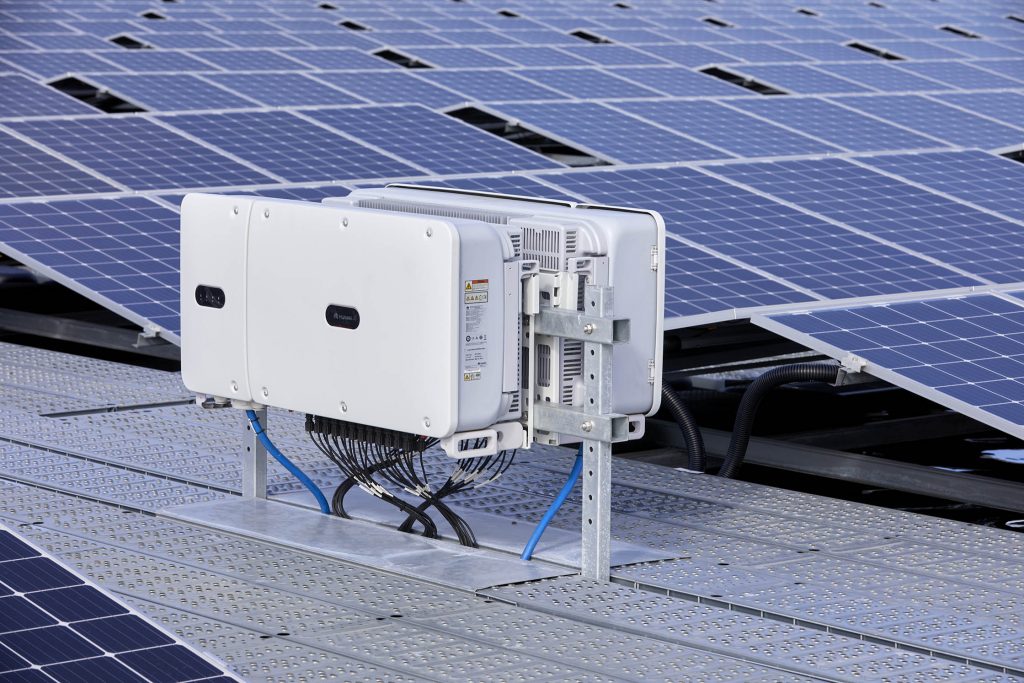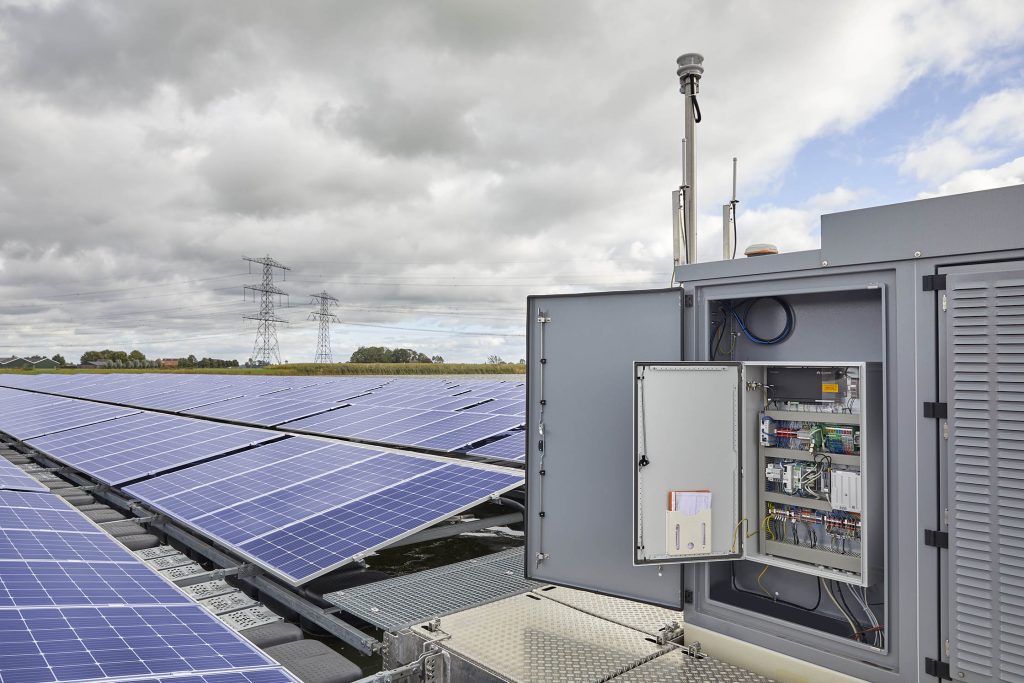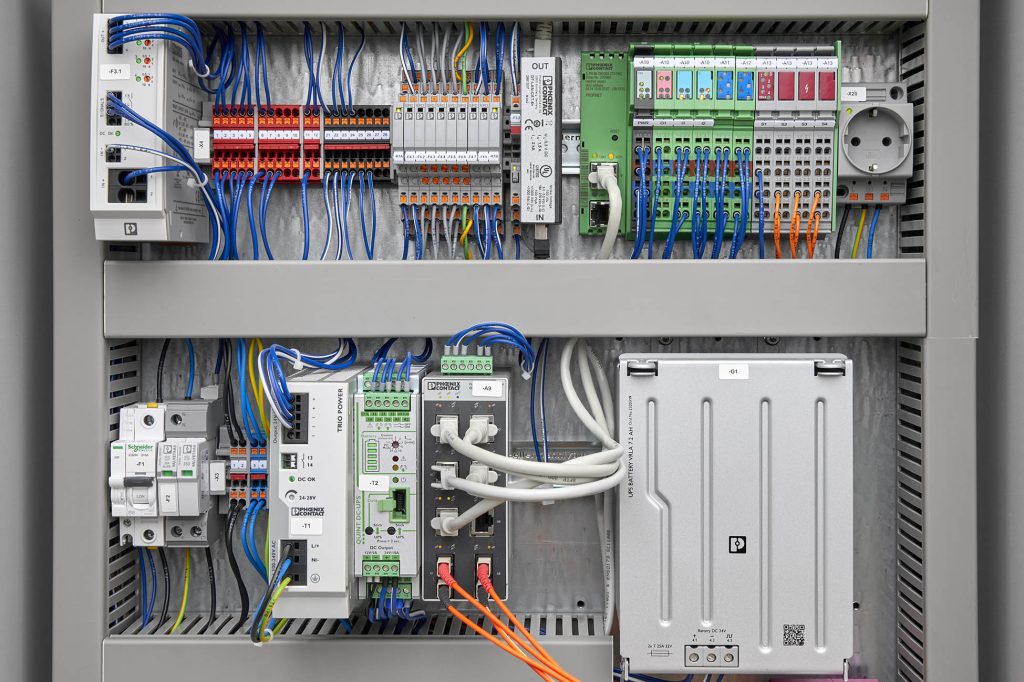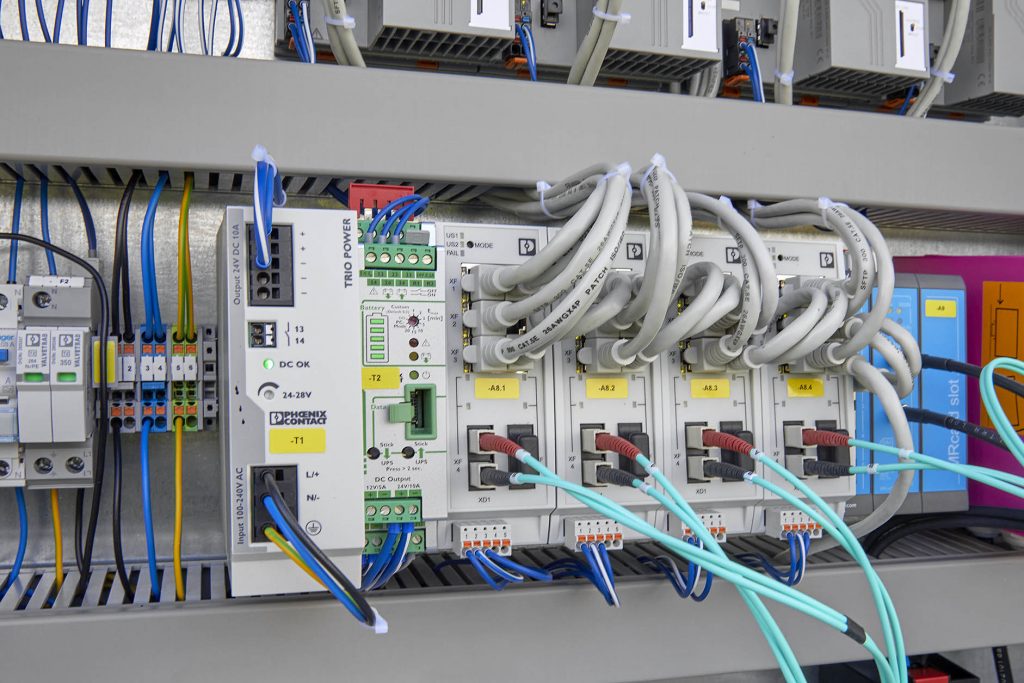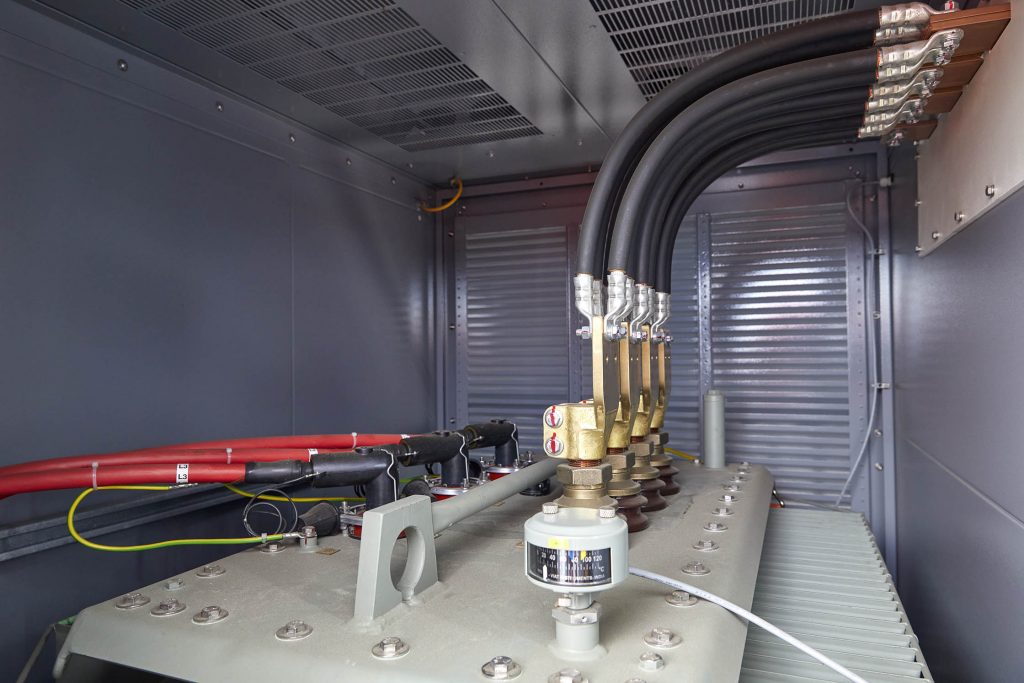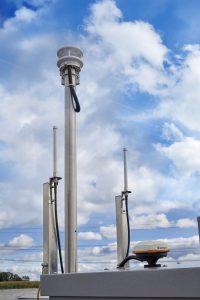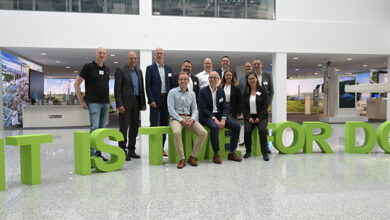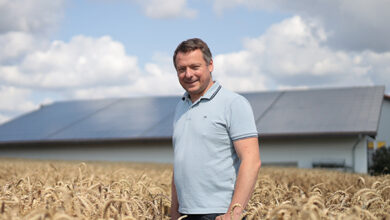When it gets too narrow for the solar power plants on land, they go out on the water. At least that’s the case near the Dutch town of Zwolle. Stable 27 megawatts of solar power despite shaky ground. A site visit with a boat trip.
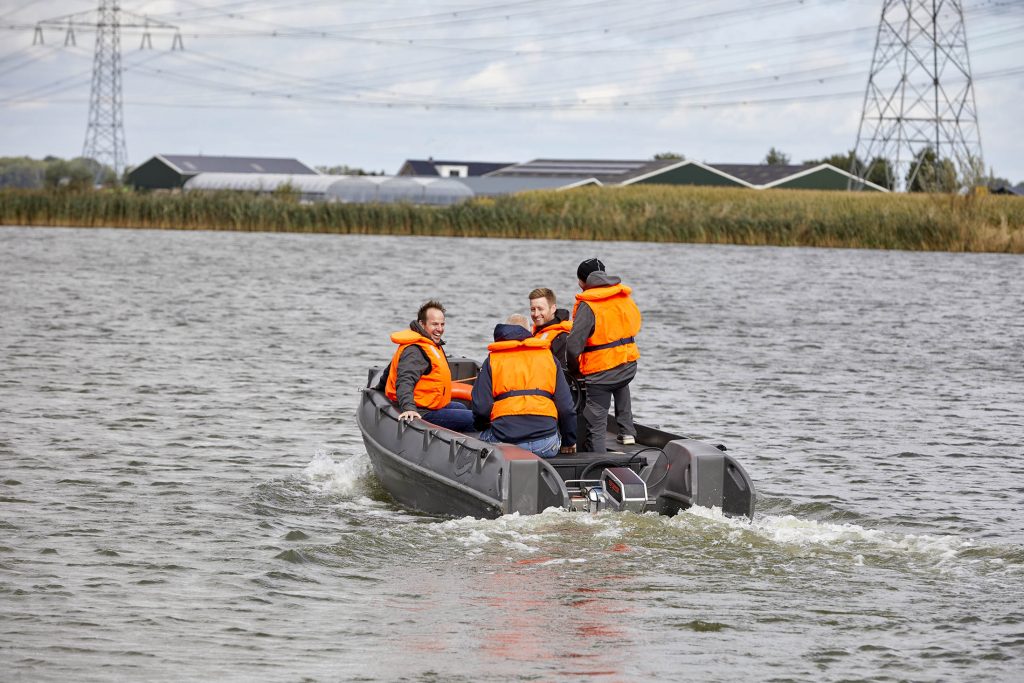
The power of the sun is the basis of life on earth. In order to access its energy, we are currently burning mainly and far too much formerly plant remains in the form of oil and coal. For millions of years, plants had the monopoly of energy processing by means of photosynthesis.
This has been disputed by man since 1839, after Alexandre Edmond Becquerel discovered the photoelectric effect. However, it took about 100 years before this and numerous subsequent discoveries actually led to the development of high-performance silicon solar cells. In the 1950s, the Bell Laboratories in New Jersey was one of the most successful research facilities, including in this field.
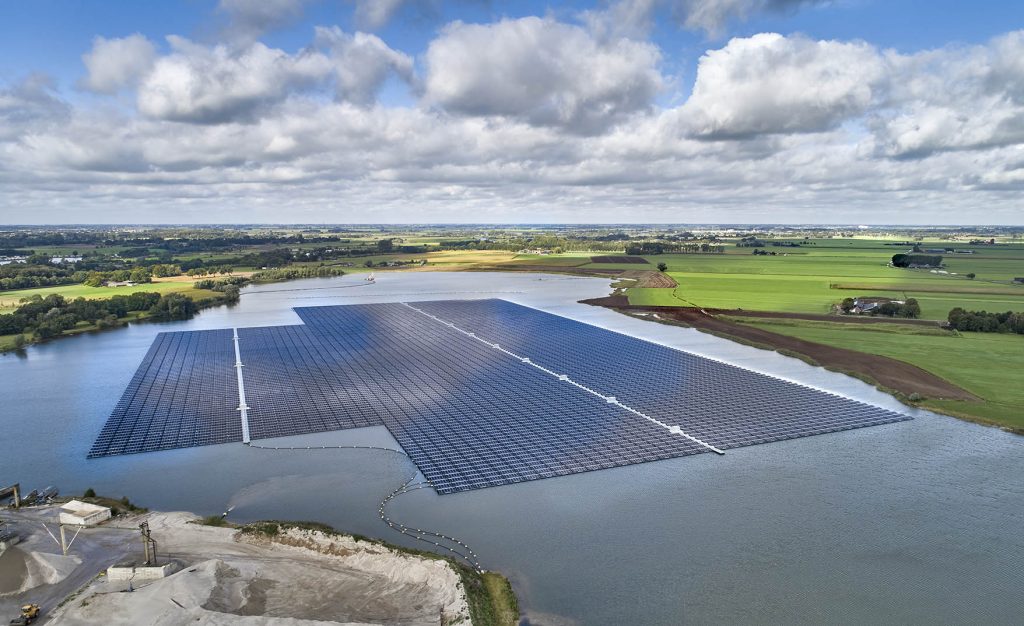
And a good 70 years later, the direct use of solar energy to produce electricity is becoming essential for the survival of the entire planet, because the use of energy stored in fossil plant residues releases disastrous amounts of CO2. The problem is that where solar cells can be produced, paid for and used on a large scale, in industrialized first-world countries, land is becoming increasingly precious.
On wobbly ground
In the Dutch Zwolle is now in operation, producing 27 megawatts of electricity. The special feature: It floats. And it does so on a large body of water that belongs to the Bomhofsplas gravel pit. This deserves a closer look: With the CEO of the system integrator Zebotec, Werner Neff, we put on the life jackets and left the solid ground.
The Constance-based company played a leading role in the construction of the floating solar power plant. The Zebotec GmbH has established itself over the past 15 years as one of the world’s leading independent system integrators for the control of photovoltaic power plants. The range of services also includes the setup of efficient Ethernet networks, which are used for networking plant areas as well as for data exchange.
WLAN instead of cable
During the crossing, by electrically powered boat of course, the head of the Constance-based solar specialist explains the function of the Ethernet network used here: “On land is the grid transfer point. Here, the power generated by the solar panels on the lake is fed into the public grid. This is done subsea by cable. However, the power data of the system reaches land via WLAN, because cabling here would have been far too expensive and complex. The WLAN clients installed in each transformer station connect to WLAN access points mounted in stations near the shore.”
Water areas are a real alternative to scarcer sites on land.
Werner Neff, CEO Zebotec GmbH
In the meantime, we have docked at the floating plant. The solar panels are mounted on floats and oriented like a roof. “This optimizes the irradiation of the sunlight and thus the yield,” explains Werner Neff. Isn’t shading the water an ecological problem? “No, this has been studied extensively. On the contrary: fish even seek out the floating plant because they find protection from aerial predators here. And increased algae formation does not occur either, so the oxygen content of the water is not disturbed either.”
Neff opens one of the transformer stations and points out the installed components: “Especially here on the water, the high reliability and robustness of the WLAN components used is crucial. For this reason, we opted for the “FL WLAN 5110” from Phoenix Contact. The industrial-grade devices can be configured as a WLAN client as well as a repeater or access point.”
Configuration on site
Jan Aulenberg, accompanying expert and product manager in the field of network technology from Phoenix Contact Electronics, explains the advantages of the components used: “As a system integrator, Zebotec thus has the flexibility to initially set up the control cabinets of all transformer stations identically and only carry out the final configuration of the WLAN network in the respective system. This is a real argument, especially here on the lake.”
Radio data transmission
Two omnidirectional antennas are installed on each transformer station for data exchange between the FL WLAN 5110. For the connection of the access points with a FL WLAN 5110 installed at the central grid transfer point on shore, Zebotec uses directional antennas due to the greater distance. To protect the PV system, all antenna cables are fused with overvoltage protection from Phoenix Contact.
Looking at the opened control cabinets, Jan Aulenberg beams, because Zebotec does not only rely on Phoenix Contact in the area of network technology. Werner Neff explains why: “Of course, there are also alternatives that are cheaper. But this pays off over the operating life of such a system. The infrastructure components from Phoenix Contact are “industrial grade” and therefore robust enough to meet our requirements for high availability. It is much more expensive in the long run if the system is down or a technician has to come by because a component has failed.”
Climate-neutral construction site
The entire construction site was consistently climate-neutral. Only electrically powered machines and equipment were used. An installed battery storage system on site supplies tools and electric vehicles regardless of the current solar radiation. And to ensure that men and materials can get to the floating solar plant, even the boats are equipped with electric motors.
This means that solar power plants can be operated safely, resource-efficiently and profitably even on fluctuating planks.
